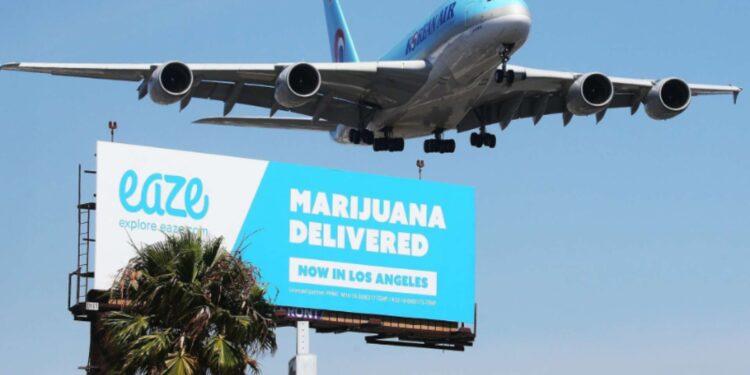There was a time where Eaze was a promise of the future for the marijuana industry. It got in right before California legalized recreational marijuana and was primed to be the frontrunner in that space. And that’s pretty much what happened for a bit, but that big, infinite future that seemed inevitable never really came to fruition, and last month Eaze filed for bankruptcy.
The San Francisco Standard has just put out a fantastic write-up on Eaze’s trajectory, going into the lavish parties in the beginning and ending with numerous different CEO’s and a burning up of cash.
Eaze started in San Francisco, delivering medical marijuana. It was popular almost immediately. The website was buggy and delivery times frequently wrong, but there was a good amount of leniency given to a marijuana company back then. It was just exciting to be able to get marijuana, legally, via delivery.
By the end of 2016, Eaze raised $25 million.
But when California finally legalized recreational cannabis in 2018, the high taxes were too much for a new business to keep up with. Regulations on delivery zones, packaging, and transportation made it even more difficult for Eaze as they were growing beyond their bounds.
The spending continued, and Eaze changed its spending projection from $1 billion in 2020 down to $412 million, then down to $190 million. A 20% downsizing came soon after.
Next came a pivot in which Eaze took over Green Dragon and its storefronts. But they continued to miss their revenue projections, and more CEO’s came aboard.
Finally, last month Eaze declared Bankruptcy and listed zero in assets.
Now, Eaze Inc. is alive and not well, operating in California, Colorado, and Florida. With $10 million behind them, the new company is humbler, carefully moving within the uncertain territory of marijuana sales.
In the beginning of legalization, it seemed the only way to go was up, and at a sharp incline. Regulations, high taxes, and red tape threw a whole lot of cold water onto that promise, and Eaze got caught in the midst of it.
“What happened is we raised way too much money at way too high valuations on the premise of growth that couldn’t come because of the regulatory framework,” Jim Clark, the new CEO, tells The San Francisco Standard.
“This is a put-your-head-down-and-grind situation. This is not a hyperbolic growth story.”
Read the full story at The San Francisco Standard.













